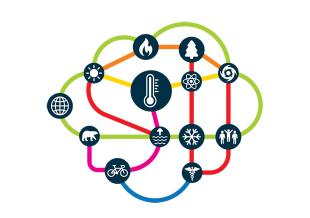Methodology
Our carbon-footprint analysis uses 2018 as the base year for calculations. Although we began calculating our operations carbon footprint in 2012, we readjusted our baseline year following a 2016 merger that increased our employee numbers by 25 percent. We conduct a biennial analysis for even-numbered years, and 2018 was our first year of analysis after the merger. That year, our firm-wide carbon footprint was 4,757 metric tons of CO2e without offsets. With offsets, it was 3,401 metric tons. Our organization-specific metric for the intensity ratio is number of employees. In 2018, our intensity ratio showed 4.07 metric tons of CO2e per person without offsets. With offsets, it showed 2.91 metric tons of CO2e per person.
Our location-based method uses calculations that draw from the U.S. Environmental Protection Agency’s emission factors for U.S. regions. Emission factors for our offices outside the United States are obtained through each country’s environmental agencies.
We annually purchase carbon offsets for all air and train business travel emissions (CO2e) and renewable energy certificates (RECs) for a minimum of 25 percent of the CO2e emissions from electricity used by our leased offices. Our base year for RECs is 2015, which was when we joined the U.S. Green Power Partnership and began disclosing our green power percentage to the program. Our baseline year for carbon offsets is 2014, when our carbon footprint analysis showed that business travel was one of our largest areas of emissions. At that time, we decided to offset emissions resulting from business-critical activities, starting with travel.
Since 2014, we have offset 8,281 metric tons of CO2e of Scope 3 emissions through third-party certified and validated renewable energy and energy-efficiency projects. In the reporting period, we’ve offset 531 metric tons of CO2e and purchased Green-e® Climate certified RECs for 318.59 metric tons of Scope 2 CO2e emissions. We account for business travel emissions through ticket invoices and a regression model formula that estimates emissions based on the relationship between ticket purchases and emissions. We account for electricity emissions through direct electricity bills and, when precise electricity use data for our offices is not available, records from the buildings in which we lease space.











